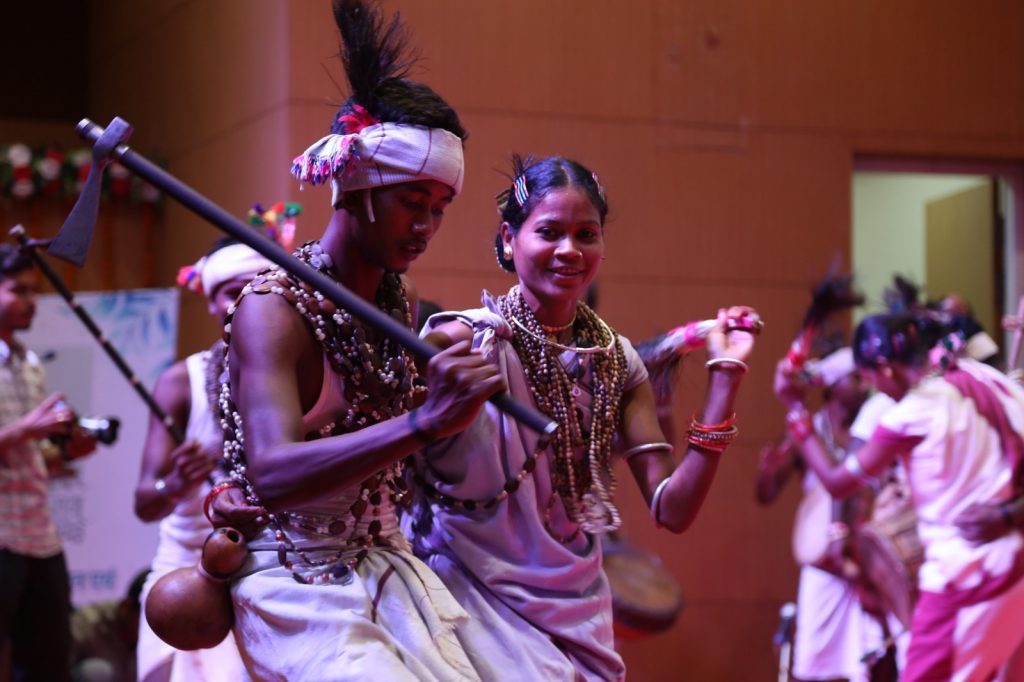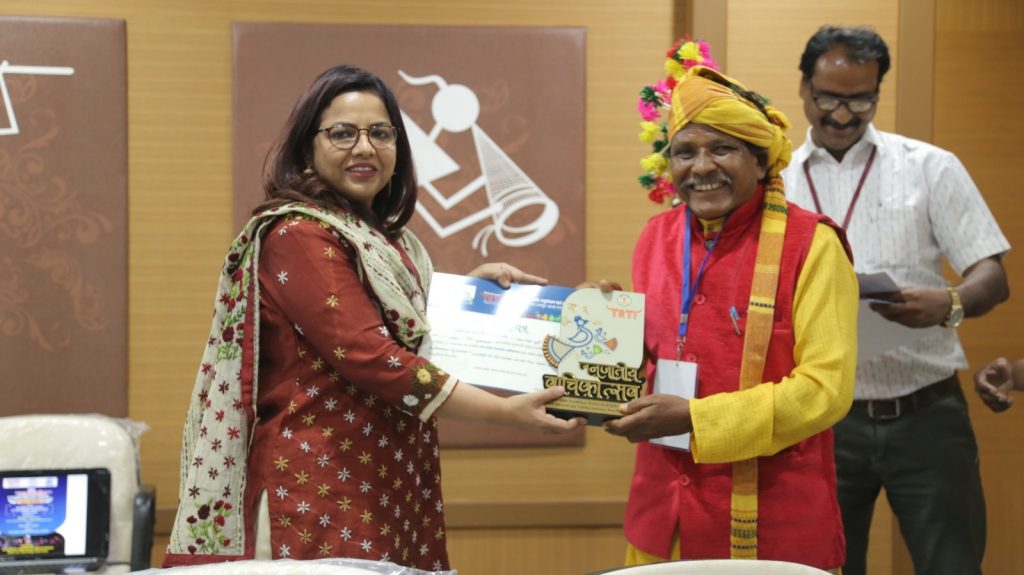A festival organised in Chhattisgarh’s Naya Raipur in the month of May witnessed the participation of Adivasi communities with the aim to protect and promote a rich cultural heritage, writes Deepanwita Gita Niyogi

In the age of social media and the internet, bedtime stories around bonfires can even enthral the adult mind as they signify a rich oral tradition as old as the evolution of languages in human societies.
Bearing this in mind, Abhay Minz, assistant professor of anthropology at Dr. Shyama Prasad Mukherjee University in Ranchi, is planning to document indigenous songs and lore with professor John M. Peterson of Kiel University, Germany. This assumes importance as UNESCO estimates that 3000 indigenous languages and dialects spoken today around the world will vanish by the end of the century.
Across India, tribal communities have a rich storytelling heritage which is passed on through the word of mouth from one generation to the next. These include myths, stories, legends, proverbs, riddles, dance forms, songs and festivals communicated orally.
Many of these myths are linked to sacred groves or places of tribal worship rich in biodiversity. There are tales of forest deities who protect forests in Jharkhand from outside influence and stories related to Jalni Maata, an important deity, associated with the sacred groves of Bastar.
As safeguarding the tribal oral tradition is important in today’s time, the Tribal Research and Training Institute, in collaboration with the Union Ministry of Tribal Affairs, organised a festival on oral tradition or Janjatiya Vachikotsav in the last week of May in Naya Raipur, Chhattisgarh.
In the three-day festival, 240 participants came together from different tribal communities across Chhattisgarh. The aim was to protect and promote the rich oral tradition of India. Shammi Abidi, commissioner and director, Department of Tribal and Scheduled Caste, organised the event.
India’s rich heritage
The most interesting feature about oral tradition is that it is connected across time through memory. The Vachikotsav festival explored different kinds of oral tradition such as tribal deities, folktales, proverbs, folk songs and rituals. It also highlighted the importance of the ghotul, the traditional youth dormitory of the Muria tribe, which is under threat.
In the present day, ghotuls, places where songs and dances were once regularly organised, are declining though a few are intact in Chhattisgarh’s Narayanpur district. There are several reasons behind the disappearance of ghotuls. The long-drawn battle between security forces and Maoists for decades is one of the reasons.

The modern school education system is also to be blamed for the decline in the popularity of ghotuls. With the dominance of schools even in interior villages, youths, who used to flock to ghotuls for learning songs and dances, are now giving them a miss. Many are opting for college education in cities and becoming detached from this tribal tradition.
Sensing the disintegration of the ghotul culture, Chhattisgarh chief minister Bhupesh Baghel had ordered the renovation of old ghotuls and the construction of new ones to keep this unique tradition alive.
According to Abidi, the Tribal Research and Training Institute had organised a national tribal literary festival last year where a session on folklore was held. “But as adequate time could not be devoted to it, this year the focus was on Chhattisgarh’s oral tradition.” Abidi added. She was happy that the institute provided a platform for the event which was a feast to the eyes.
Preserving oral tradition
Minz explained that several nations of the world have recognised the UN Declaration on the Rights of Indigenous Peoples. But in India, there is not much knowledge available on what is happening with the majority of the dialects or languages spoken today. “Many are on the path of becoming extinct as dialects and languages become endangered when people do not speak them anymore. Most people have also become indifferent to mother tongues.”

Explaining the importance of the mother tongue, Minz added that Lepchas, a tribe of the Himalayan range, have many words for bamboo but in English there is only one word to describe it. Oral traditions in mother tongues also highlight the importance of history. For instance, a Kharia tribe song mentions the Khyber Pass and another song speaks of the Son river. “So, if these are lost, we would lose history as well,” said Minz, who is also the director of the International Documentation Center for Endangered Languages and Cultures.
Perhaps one of the best ways to preserve tribal oral traditions is to take travellers on tours, and this is what B Bindu, who runs a travel start-up called Culture Devi, has been doing.
Bindu, who is interested in sharing information on folklore and myths on her walks, admitted that at one time she was not familiar with the real identity of Bastar, steeped in tribal tradition, and heard everything second hand from her father.
Today, Bindu’s strong points are heritage walks often associated with cultural places. She regales visitors about stories of rath yatras, temples and deities. “Devi represents the female in Indian society. Though society restricts us, it is women who carry cultural things forward,” she said.












